
Dikos Ntsaaígíí dóódaa! Nation musters defense against COVID-19
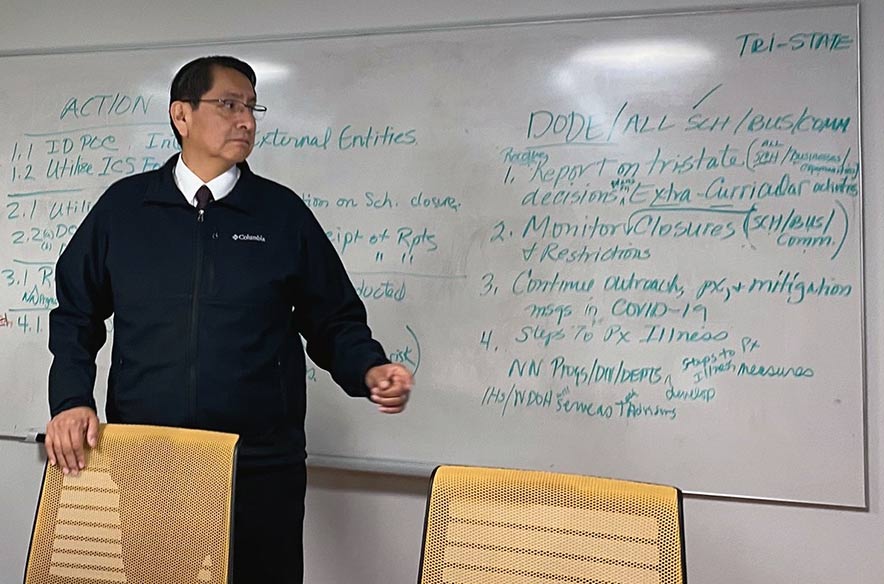
Navajo Times | Arlyssa Becenti
Navajo Nation President Jonathan Nez at the command center for the Navajo Nation COVID-19 Preparedness Team. On Wednesday Nez and Vice President Myron Lizer placed a travel restriction on the executive branch.
TSEBONITO
As of Wednesday there has been no confirmed case of the coronavirus (dubbed “Dikos Ntsaaígíí-19” in Diné Bizaad) on Navajo, but area health facilities and officials are working toward being as prepared as possible. Meanwhile, Navajo Nation President Jonathan Nez and Vice President Myron Lizer have amped up travel restrictions on the Executive Branch.
On Feb. 27, Nez and Lizer established the Navajo Nation COVID-19 Preparedness Team, to monitor, plan, prepare, and coordinate precautionary efforts to address the novel coronavirus.
“This health command operation center will represent the entire Navajo Nation,” said David Nez, incident commander.
There have been individuals who have been tested on Navajo and those tests have been returned negative. Tests results can take 24-48 hours to process.
President Nez said he is looking to request test kits be made available through Indian Health Service; right now they are available through state departments of health.
“Our request (is) if there is a person that has these symptoms and they go through IHS or 638’s then they’d be provided with these test kits,” said Nez. “We are hopeful we get more to IHS or 638’s.”
As a public service, the Navajo Times is making all coverage of the coronavirus pandemic fully available on its website. Please support the Times by subscribing.
How to protect yourself and others.
Why masks work. Which masks are best.
Resources for coronavirus assistance
Various health officials and professionals from throughout Navajo presented to the preparedness team last Friday on what their entities are doing to prepare.
“We’ve been doing a lot of preparation, a lot of education at making sure we are completing our training, our inventory,” said Roselyn Tso, director of Navajo Area Indian Health Service, which oversees the 12 IHS facilities within the Navajo Area. “We know there is a lot of information out there but what Indian Health Service is relying on is CDC (Centers for Disease Control).”
According to Tso, Navajo Area IHS has been in preparation mode for the past three months, and activated its emergency operation center in the St. Michael’s office on Feb. 25.
A few weeks ago, Navajo Nation President Jonathan Nez and Vice President Myron Lizer sent a letter requesting a mandatory 45-day quarantine protocol for U.S. Commissioned Corps officers returning from deployment.
“We strongly recommend minimal deployments are considered to assist with controlling the spread of Novel Coronavirus Disease 2019,” stated the letter. “We would like to remind everyone that such deployments impact the critical staffing shortage of health care and public health personnel on a daily basis.”
As of Friday, 10 or 11 IHS commission officers were either leaving or returning back to Navajo. There was also IHS staff that was recently in Seattle for training, and Tso said they would enact a 14-day home quarantine on them before they return to work.
“Commissioned Corps officers don’t have a choice; they can be pulled from our area and taken to a hot zone (for the virus),” said Nez. “If they go off to a hot zone, they shouldn’t come back for 45 days. There are two reasons: We want to be safe … and maybe it will deter the feds from sending those officers elsewhere, because we need them here as well.”
Establishing two facilities in Arizona and New Mexico for IHS to utilize as a quarantine or isolation facility for patients is the next order of business, Tso said last week. They will also look into how they will transport patients.
Sandra L. Aretino, CEO of Fort Defiance Indian Hospital Board, said Tsehootsoi Medical Center has instituted a patient screening template so all the providers can screen travel and symptom history for any patient. The hospital has begun screening patients at the entrance of the hospital. They will also set up a hotline for patients to have the option of calling in if they have questions about their symptoms before they come into the hospital.
As for the Chinle Service Unit, on Monday they stated they will enhance screening processes upon arrival at Chinle Hospital, Piñon Health Center, Many Farms and Rock Point clinics and Tsaile Health Center.
Inpatient and emergency department visitors will be restricted to individuals with no fever, cough, runny nose, or sore throats. Those with a fever or respiratory symptoms will be asked to wear a surgical mask.
When it comes to surgical or N95 masks, each of the health facilities emphasized the need to not hoard or give away these masks, because they are to be used by providers.
“We need to keep our masks for our staff, our primary care, our doctors and nurses,” said Aretino. “We don’t want people saying, ‘I need to protect my family. I should just grab a handful of masks. No one will miss 10 masks.’ If we all do that we wont have masks. Keep the supplies in house for our providers.”
Sharon Edison, Sage Memorial Hospital’s director of clinical services, said the hospital’s personal protective equipment for infections is at a low count, similar to other facilities on Navajo.
“I know there will be a shortage,” said Edison.
An area school that suspects a student or faculty member has coronavirus should call in to the emergency room ahead of time so they can be ready.
Since the elderly are considered to be the most vulnerable group, community health representatives are going door to door and telling them how to take care of themselves.
Dr. Jill Jim, Director of the Navajo Nation Department of Health, said the way hospitals are set up to do triage is going to change. This she said will be discussed in the next radio forum.
“The way they intake patients to be screened, such as screening for flu-like symptoms will change,” said Jim. “There will be some changes.”
Jim also explained the Navajo word “Dikos Ntsaaígíí-19,” which is being used as the identifier for the Covid-19, or Novel Corona Virus, or SARS-CoV-2. The idea was to not make up a new word for the virus, but rather use a term that is known and simple.
“The Coronavirus is a respiratory disease and that’s what we are familiar with,” said Jim. “When we announce this to individuals we want them to know it’s not associated with SARS but it’s in the same family of diseases, and that’s why we are calling it by Dikos Ntsaaígíí. This word can help individuals understand it’s not anything other than that what this virus is capable of.”
When it comes to travelling, as of Wednesday Nez has placed travel restriction on the Executive Branch, no longer just an advisory. In a letter to his staff he stated more restrictive measures may be enacted as the situation develops.
“The health and well-being of our Navajo people is the top priority for the Nez-Lizer Administration and this includes all of our Navajo Nation employees,” said the letter. “All Divisions, Departments, and Programs are directed to restrict and cancel off-reservation travel due to the growing concerns over the COVID-19 coronavirus.”
There are certain hot spots that Nez is advising his staff and branch to completely avoid. This advisory kept Nez and Lizer from attending the Tribal Interior Budget Council meeting, which was happening in Washington D.C., a confirmed hot spot with over 20 confirmed cases of COVID-19. Instead they called in to the meeting and spoke with the Council Delegates who did make their way to D.C. It’s not known how many (or which) delegates are in Washington. New Mexico recently reported three presumptive positive COVID-19 cases (see accompanying story).
Speaker Damon also placed a travel advisory on the Legislative Branch on March 5.
Jim said spam mail and phone calls from people impersonating Department of Health or IHS employees are becoming a concern, and she advises people to be vigilant of these.
“We need to warn public and leadership that when you get calls you need to verify their identification,” said Jim.
As for funding, the president’s office allocated $100,000 to Navajo Department of Emergency Management. Years ago the Navajo Nation Council had established the Navajo Nation Emergency Disaster Fund, but it was never funded. Nez said there will be a request for $3 million to put in the disaster fund so it can be available in case of declaration of emergency.
Last week, U.S. President Donald Trump signed an $8.3 billion emergency funding package to respond to the outbreak. At least $40 million of this will be used specifically for tribal and urban Indian health organizations.
But because the CDC can’t make these funds available to self-determination or self-governance contracts and compacts, Nez and Lizer have requested the CDC receive authorization for an interagency transfer of funds to IHS.
“We also urge that the federal funding formula for tribes be non-competitive,” stated Nez and Lizer’s letter to US Vice President Mike Pence. “That the time frame for funding availability be expedited for use within tribal communities, particularly the Navajo Nation.”
On Monday, the Dow Jones Industrial Average was down more than 1,600 points as a result of COVID-19. Nez’s Deputy Chief of Staff Milton Bluehouse Jr. said Nez directed them to monitor the economic situation. They wrote letters to the Office of the Controller asking for the status of Navajo Nation investments, projected investment performance in the coming financial quarter, and market strategies to mitigate negative impacts on the Navajo Nation’s investments.
“The response from OOC is the investments are diversified and with this diversification the stability of Navajo investment portfolio would be protected,” said Bluehouse, who also said Nez is actively monitoring oil and gas sales, as well as the impact on tourism and gaming.
The command center for the Navajo Nation COVID-19 Preparedness Team is located at the Department of Health building in Window Rock. A hotline is also established for anyone with questions: 928-871-7014.
There will be a press conference tomorrow. Meetings for the Navajo Nation COVID-19 Preparedness Team are held every Monday. COVID-19 leadership meetings are Tuesdays and Fridays. This meeting is open for Council delegates to attend and get the updates they need. Radio forums are held every Thursday on KTNN and KWRK at 6 p.m.
“All these recommendations we are taking from CDC and we are using it,” said Nez. “This is not new stuff. When it comes to requests for updates on COVID-19, and chapters saying they want to have an agency-wide meeting on it, we are being advised not to have a large gathering. We want to get information out there, but we don’t want to have large gatherings. That’s why we are having these radio forums.”

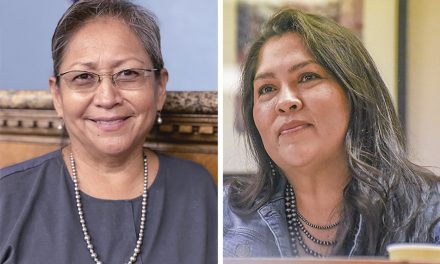
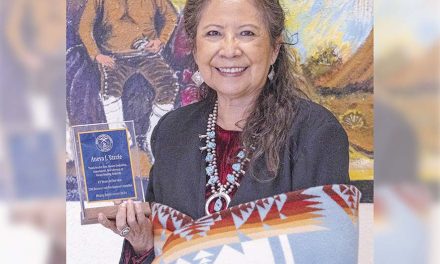

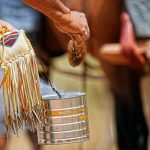
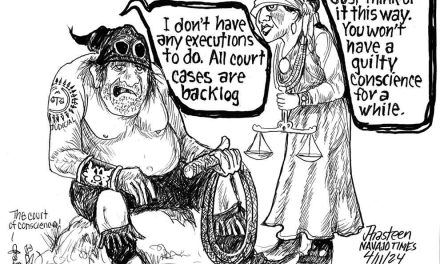

 Highway 264,
Highway 264, I-40, WB @ Winslow
I-40, WB @ Winslow